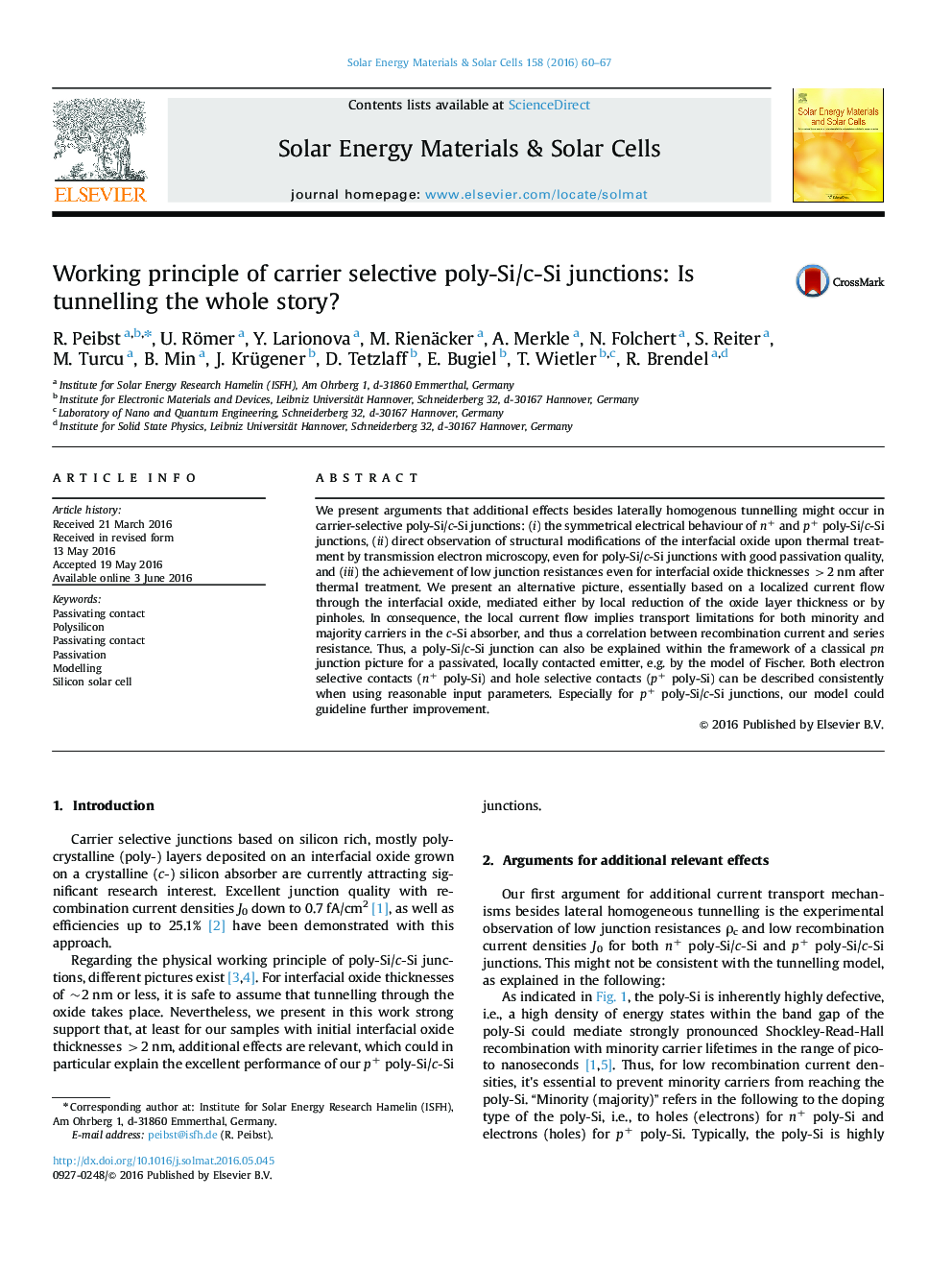| کد مقاله | کد نشریه | سال انتشار | مقاله انگلیسی | نسخه تمام متن |
|---|---|---|---|---|
| 6457422 | 1361708 | 2016 | 8 صفحه PDF | دانلود رایگان |

- Plausible arguments for additional current transport mechanisms in POLO junctions besides tunneling.
- Presentation of an alternative picture based on local current flow.
- Excellent agreement between model and experimental data for reasonable input parameters.
- Deduction of an optimization strategy for p+ poly-Si/c-Si junctions.
- Record J0 values for n+ POLO junctions with wet chemically (thermally) grown interfacial oxide - 1.5 (0.7) fA/cm2.
- Record J0 values for p+ POLO junctions with wet chemically grown interfacial oxides - 8 fA/cm2.
We present arguments that additional effects besides laterally homogenous tunnelling might occur in carrier-selective poly-Si/c-Si junctions: (i) the symmetrical electrical behaviour of n+ and p+ poly-Si/c-Si junctions, (ii) direct observation of structural modifications of the interfacial oxide upon thermal treatment by transmission electron microscopy, even for poly-Si/c-Si junctions with good passivation quality, and (iii) the achievement of low junction resistances even for interfacial oxide thicknesses >2Â nm after thermal treatment. We present an alternative picture, essentially based on a localized current flow through the interfacial oxide, mediated either by local reduction of the oxide layer thickness or by pinholes. In consequence, the local current flow implies transport limitations for both minority and majority carriers in the c-Si absorber, and thus a correlation between recombination current and series resistance. Thus, a poly-Si/c-Si junction can also be explained within the framework of a classical pn junction picture for a passivated, locally contacted emitter, e.g. by the model of Fischer. Both electron selective contacts (n+ poly-Si) and hole selective contacts (p+ poly-Si) can be described consistently when using reasonable input parameters. Especially for p+ poly-Si/c-Si junctions, our model could guideline further improvement.
Journal: Solar Energy Materials and Solar Cells - Volume 158, Part 1, December 2016, Pages 60-67